Attractions · Europe · Events · Food and Drink · Going Out · Regions · Spain · Travel Miscellany · Western Europe
Autumn in Andalusia: a guide to culture and cuisine
There are many reasons to travel Andalusia in the autumn months, after the searing summer sun begins to pale, the crowds slowly dissipate, and the hillsides awaken from their summer dormancy for something of a second spring with a burst of colour. Cultural enthusiasts will enjoy better, more intimate access to the innumerable historic sites, monuments and museums; meanwhile, for active culinary devotees, autumn in Andalusia holds a more specific allure with the many harvest celebrations, food markets overflowing with fresh new products and produce, and unique opportunities for culinary adventures not always available throughout the summer.
 Historic sites and museums
Among the most famous historical sites in all of Spain and even Europe, is the Alhambra Palace in Granada. Though the grounds and the Generalife Gardens already offer a unique glimpse into the sophistication of the Moorish rulers of the era, the Nasrid Palace, dating to the 13th century, is a must see. As such it is one of the most visited tourist sites in the world and access is tightly regulated. Skip summer and plan a visit for autumn, but do still plan ahead as tickets can sell out at any time of year.
Historic sites and museums
Among the most famous historical sites in all of Spain and even Europe, is the Alhambra Palace in Granada. Though the grounds and the Generalife Gardens already offer a unique glimpse into the sophistication of the Moorish rulers of the era, the Nasrid Palace, dating to the 13th century, is a must see. As such it is one of the most visited tourist sites in the world and access is tightly regulated. Skip summer and plan a visit for autumn, but do still plan ahead as tickets can sell out at any time of year.
 Similarly, the Mezquita in Cordoba offers a one-of-a-kind glimpse not only into the legacy of the Moors, but the clash and blending of civilizations. With a Catholic cathedral built smack in the centre of the ancient mosque following the re-conquest, the Mezquita displays a unique and somewhat perplexing perspective on the religious and cultural history of Andalusia.
Similarly, the Mezquita in Cordoba offers a one-of-a-kind glimpse not only into the legacy of the Moors, but the clash and blending of civilizations. With a Catholic cathedral built smack in the centre of the ancient mosque following the re-conquest, the Mezquita displays a unique and somewhat perplexing perspective on the religious and cultural history of Andalusia.
 To complete the tour of the most popular and important historical sites in Andalusia, one must also visit the cathedral and Alcazar of Seville. The 15th century cathedral is the largest Gothic church in the world and third largest by any measure, built specifically to exhibit the wealth and grandeur of the city. The adjacent Alcazar has an illustrious history, having been developed earlier by the Moorish caliphs and renowned as one of the most beautiful palaces in Spain. Today the palace of Seville stands as the oldest royal palace in Europe that is still in official use by a ruling monarchy.
To complete the tour of the most popular and important historical sites in Andalusia, one must also visit the cathedral and Alcazar of Seville. The 15th century cathedral is the largest Gothic church in the world and third largest by any measure, built specifically to exhibit the wealth and grandeur of the city. The adjacent Alcazar has an illustrious history, having been developed earlier by the Moorish caliphs and renowned as one of the most beautiful palaces in Spain. Today the palace of Seville stands as the oldest royal palace in Europe that is still in official use by a ruling monarchy.
 While each of these sites is something of an open-air museum, for a more traditional museum experience there is no city in Andalusia quite like Malaga with well over 30 museums and counting. The birthplace of Pablo Picasso, Malaga’s Picasso Museum and Picasso Birthplace Museum are huge attractions. Beyond that there is a Pompidou satellite museum with works from the famed centre in Paris, a Museum of Russian Art with works on loan from St Petersburgh, the Contemporary Art Museum, and various museums highlighting local history and artists. There’s something for everyone with such things as a Wine Museum, Automobile Museum, Museum of Glass, Dollhouse Museum, etc, etc, etc. The most recent addition is the Museum of Imagination with a quirky, light-hearted approach to modern art.
Garden tours
Though virtually all of the palaces mentioned above also display gardens with the most impressive displays, it’s worth mentioning these separately. One of the many legacies of the Moors in Spain is their unique garden designs, charatcerised by closed patios, central water motifs with ponds and fountains, and decorative paving. The Generalife gardens at the Alhambra in Granada are amongst the most impressive and well preserved examples of their original designs from the 8th to 15th centuries. Later, many of the Moorish built or inspired gardens expanded to include vast open areas, though still employing channeled water canals and ponds, precision trimming and rare varieties of plants and trees. The gardens of the Palace of Sevilla and the Palace of the Christian Kings in Cordoba are stunning examples.
While each of these sites is something of an open-air museum, for a more traditional museum experience there is no city in Andalusia quite like Malaga with well over 30 museums and counting. The birthplace of Pablo Picasso, Malaga’s Picasso Museum and Picasso Birthplace Museum are huge attractions. Beyond that there is a Pompidou satellite museum with works from the famed centre in Paris, a Museum of Russian Art with works on loan from St Petersburgh, the Contemporary Art Museum, and various museums highlighting local history and artists. There’s something for everyone with such things as a Wine Museum, Automobile Museum, Museum of Glass, Dollhouse Museum, etc, etc, etc. The most recent addition is the Museum of Imagination with a quirky, light-hearted approach to modern art.
Garden tours
Though virtually all of the palaces mentioned above also display gardens with the most impressive displays, it’s worth mentioning these separately. One of the many legacies of the Moors in Spain is their unique garden designs, charatcerised by closed patios, central water motifs with ponds and fountains, and decorative paving. The Generalife gardens at the Alhambra in Granada are amongst the most impressive and well preserved examples of their original designs from the 8th to 15th centuries. Later, many of the Moorish built or inspired gardens expanded to include vast open areas, though still employing channeled water canals and ponds, precision trimming and rare varieties of plants and trees. The gardens of the Palace of Sevilla and the Palace of the Christian Kings in Cordoba are stunning examples.
 For a more modern and internationally inspired garden, visit La Concepcion botanical garden in Malaga. What began more than 150 years ago as a private endeavour to amass an unrivalled collection of plants and trees from around the world is now a well organised and magnificent botanical garden spread over 49 hectares on the outskirts of the city and has only been open to the public for some 20 years.
Culinary festivals
One of the most engaging and entertaining ways to celebrate the harvest and the proliferation of beautiful autumn products in Andalusia is to attend one of the many food festivals across the region. The Spanish need little excuse for a party, and the harvest abundance of varied and delicious products is as good an excuse as any. Each of these fiestas will include music and dance, copious amounts of drink and amazing food. This is the best way to get your cultural and culinary fix at the same time.
For a more modern and internationally inspired garden, visit La Concepcion botanical garden in Malaga. What began more than 150 years ago as a private endeavour to amass an unrivalled collection of plants and trees from around the world is now a well organised and magnificent botanical garden spread over 49 hectares on the outskirts of the city and has only been open to the public for some 20 years.
Culinary festivals
One of the most engaging and entertaining ways to celebrate the harvest and the proliferation of beautiful autumn products in Andalusia is to attend one of the many food festivals across the region. The Spanish need little excuse for a party, and the harvest abundance of varied and delicious products is as good an excuse as any. Each of these fiestas will include music and dance, copious amounts of drink and amazing food. This is the best way to get your cultural and culinary fix at the same time.
 While the harvest festivals begin already in late summer, here is a small sampling of the true autumnal festivals.
Anchovy festival: Rincon de la Victoria, 19-23 September
Almond festival: Almogia, September 30
Chestnut festival: Alcaucin, Alpujarras de la Sierra, Pujerra, 2-4 October
Quince festival: Priego de Cordoba, 29-30 October
Iberian ham and pork festival: Aracena, Campillos, 4 November
Rabbit festival: Parauta, 10 November
Food markets
A self-guided visit to any of the many sensational food markets around Andalusia is another way to enjoy the harvest first hand, by sampling the freshest and best of the local products carted daily to these thriving markets. Perhaps the most impressive of all is the Atarazanas food market in Malaga. For snacking and sampling the goods on the spot, the upscale Ambrosia Market in Marbella has you covered. Andalusia is one of the biggest, most serious ecological and organic food producing regions in Europe and the markets naturally reflect this. Try the market on Cervantes Street in Malaga the second Saturday of each month, the Cala de Mijas market on the last Sunday of every month, or on the third Sunday of each month in the Arroyo de la Miel in Benelmadena.
While the harvest festivals begin already in late summer, here is a small sampling of the true autumnal festivals.
Anchovy festival: Rincon de la Victoria, 19-23 September
Almond festival: Almogia, September 30
Chestnut festival: Alcaucin, Alpujarras de la Sierra, Pujerra, 2-4 October
Quince festival: Priego de Cordoba, 29-30 October
Iberian ham and pork festival: Aracena, Campillos, 4 November
Rabbit festival: Parauta, 10 November
Food markets
A self-guided visit to any of the many sensational food markets around Andalusia is another way to enjoy the harvest first hand, by sampling the freshest and best of the local products carted daily to these thriving markets. Perhaps the most impressive of all is the Atarazanas food market in Malaga. For snacking and sampling the goods on the spot, the upscale Ambrosia Market in Marbella has you covered. Andalusia is one of the biggest, most serious ecological and organic food producing regions in Europe and the markets naturally reflect this. Try the market on Cervantes Street in Malaga the second Saturday of each month, the Cala de Mijas market on the last Sunday of every month, or on the third Sunday of each month in the Arroyo de la Miel in Benelmadena.
 Olive harvest and mill tours
Andalusia is the world’s largest producer of olive oil and recent rankings place nearly 30 Andalusian olive oils in the top 50 of the world. The olive harvest generally lasts anywhere from early November into early winter and a visit to one of the many key farms and mills at this time yields an experience unlike other times of the year. Some will even allow you to join in the harvest with an advance request, but most will show you the process in any case, as they turn ripe olives into liquid gold. There’s an unimaginable variety of different olives with distinctive characteristics and an expert tasting at one of the more important mills will blow your mind.
Olive harvest and mill tours
Andalusia is the world’s largest producer of olive oil and recent rankings place nearly 30 Andalusian olive oils in the top 50 of the world. The olive harvest generally lasts anywhere from early November into early winter and a visit to one of the many key farms and mills at this time yields an experience unlike other times of the year. Some will even allow you to join in the harvest with an advance request, but most will show you the process in any case, as they turn ripe olives into liquid gold. There’s an unimaginable variety of different olives with distinctive characteristics and an expert tasting at one of the more important mills will blow your mind.
 See such olive farms as Mueloliva in Priego de Cordoba, Melgarejo Mill in Jaen, or Finca la Torre in Bobadilla, all of which are ranked as some of the best olive oils in the world.
Alan Hazel is Owner and Director of Cortijo El Carligto. Cortijo el Carligto is a private Andalucían hideaway and luxury rental estate in the hills of Malaga, Spain, overlooking the Mediterranean.
If you would like to be a guest blogger on A Luxury Travel Blog in order to raise your profile, please contact us.
See such olive farms as Mueloliva in Priego de Cordoba, Melgarejo Mill in Jaen, or Finca la Torre in Bobadilla, all of which are ranked as some of the best olive oils in the world.
Alan Hazel is Owner and Director of Cortijo El Carligto. Cortijo el Carligto is a private Andalucían hideaway and luxury rental estate in the hills of Malaga, Spain, overlooking the Mediterranean.
If you would like to be a guest blogger on A Luxury Travel Blog in order to raise your profile, please contact us.
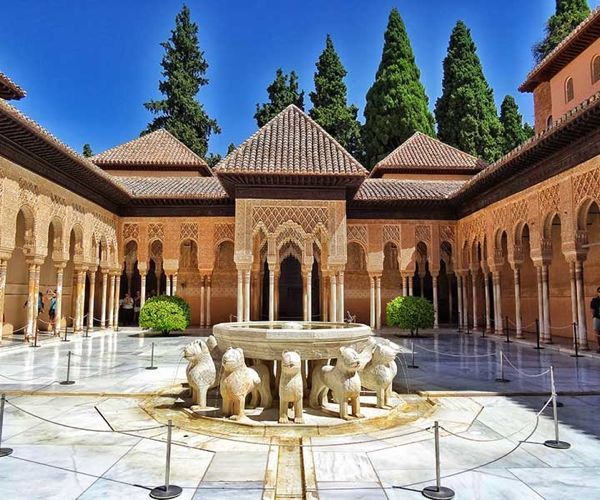 Historic sites and museums
Among the most famous historical sites in all of Spain and even Europe, is the Alhambra Palace in Granada. Though the grounds and the Generalife Gardens already offer a unique glimpse into the sophistication of the Moorish rulers of the era, the Nasrid Palace, dating to the 13th century, is a must see. As such it is one of the most visited tourist sites in the world and access is tightly regulated. Skip summer and plan a visit for autumn, but do still plan ahead as tickets can sell out at any time of year.
Historic sites and museums
Among the most famous historical sites in all of Spain and even Europe, is the Alhambra Palace in Granada. Though the grounds and the Generalife Gardens already offer a unique glimpse into the sophistication of the Moorish rulers of the era, the Nasrid Palace, dating to the 13th century, is a must see. As such it is one of the most visited tourist sites in the world and access is tightly regulated. Skip summer and plan a visit for autumn, but do still plan ahead as tickets can sell out at any time of year.
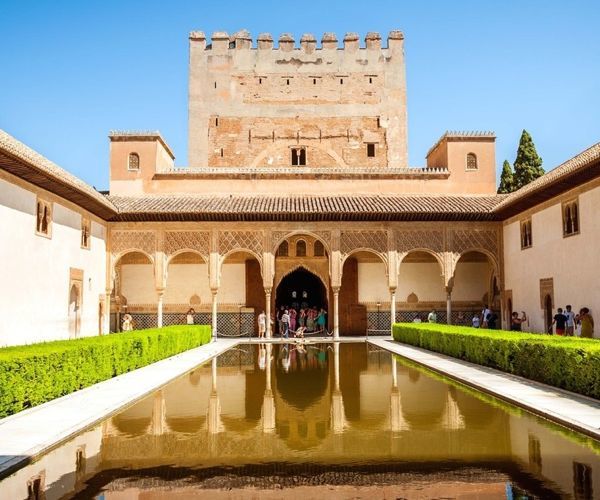 Similarly, the Mezquita in Cordoba offers a one-of-a-kind glimpse not only into the legacy of the Moors, but the clash and blending of civilizations. With a Catholic cathedral built smack in the centre of the ancient mosque following the re-conquest, the Mezquita displays a unique and somewhat perplexing perspective on the religious and cultural history of Andalusia.
Similarly, the Mezquita in Cordoba offers a one-of-a-kind glimpse not only into the legacy of the Moors, but the clash and blending of civilizations. With a Catholic cathedral built smack in the centre of the ancient mosque following the re-conquest, the Mezquita displays a unique and somewhat perplexing perspective on the religious and cultural history of Andalusia.
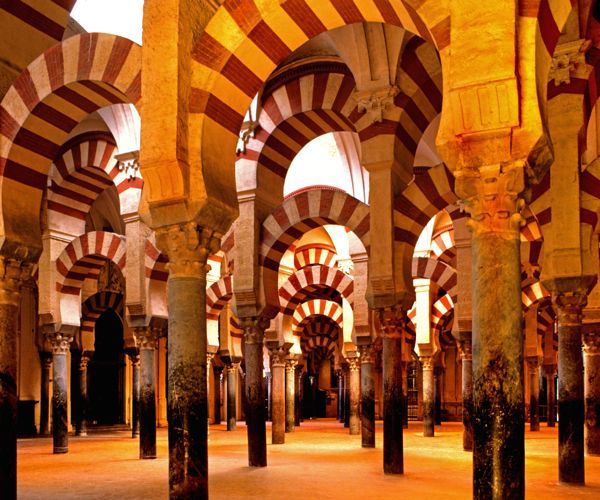 To complete the tour of the most popular and important historical sites in Andalusia, one must also visit the cathedral and Alcazar of Seville. The 15th century cathedral is the largest Gothic church in the world and third largest by any measure, built specifically to exhibit the wealth and grandeur of the city. The adjacent Alcazar has an illustrious history, having been developed earlier by the Moorish caliphs and renowned as one of the most beautiful palaces in Spain. Today the palace of Seville stands as the oldest royal palace in Europe that is still in official use by a ruling monarchy.
To complete the tour of the most popular and important historical sites in Andalusia, one must also visit the cathedral and Alcazar of Seville. The 15th century cathedral is the largest Gothic church in the world and third largest by any measure, built specifically to exhibit the wealth and grandeur of the city. The adjacent Alcazar has an illustrious history, having been developed earlier by the Moorish caliphs and renowned as one of the most beautiful palaces in Spain. Today the palace of Seville stands as the oldest royal palace in Europe that is still in official use by a ruling monarchy.
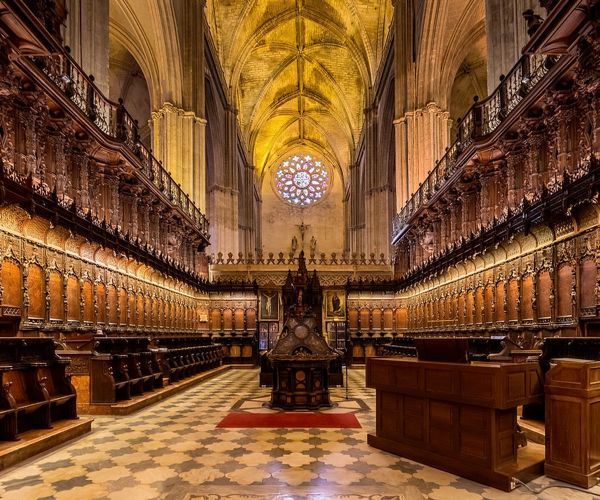 While each of these sites is something of an open-air museum, for a more traditional museum experience there is no city in Andalusia quite like Malaga with well over 30 museums and counting. The birthplace of Pablo Picasso, Malaga’s Picasso Museum and Picasso Birthplace Museum are huge attractions. Beyond that there is a Pompidou satellite museum with works from the famed centre in Paris, a Museum of Russian Art with works on loan from St Petersburgh, the Contemporary Art Museum, and various museums highlighting local history and artists. There’s something for everyone with such things as a Wine Museum, Automobile Museum, Museum of Glass, Dollhouse Museum, etc, etc, etc. The most recent addition is the Museum of Imagination with a quirky, light-hearted approach to modern art.
Garden tours
Though virtually all of the palaces mentioned above also display gardens with the most impressive displays, it’s worth mentioning these separately. One of the many legacies of the Moors in Spain is their unique garden designs, charatcerised by closed patios, central water motifs with ponds and fountains, and decorative paving. The Generalife gardens at the Alhambra in Granada are amongst the most impressive and well preserved examples of their original designs from the 8th to 15th centuries. Later, many of the Moorish built or inspired gardens expanded to include vast open areas, though still employing channeled water canals and ponds, precision trimming and rare varieties of plants and trees. The gardens of the Palace of Sevilla and the Palace of the Christian Kings in Cordoba are stunning examples.
While each of these sites is something of an open-air museum, for a more traditional museum experience there is no city in Andalusia quite like Malaga with well over 30 museums and counting. The birthplace of Pablo Picasso, Malaga’s Picasso Museum and Picasso Birthplace Museum are huge attractions. Beyond that there is a Pompidou satellite museum with works from the famed centre in Paris, a Museum of Russian Art with works on loan from St Petersburgh, the Contemporary Art Museum, and various museums highlighting local history and artists. There’s something for everyone with such things as a Wine Museum, Automobile Museum, Museum of Glass, Dollhouse Museum, etc, etc, etc. The most recent addition is the Museum of Imagination with a quirky, light-hearted approach to modern art.
Garden tours
Though virtually all of the palaces mentioned above also display gardens with the most impressive displays, it’s worth mentioning these separately. One of the many legacies of the Moors in Spain is their unique garden designs, charatcerised by closed patios, central water motifs with ponds and fountains, and decorative paving. The Generalife gardens at the Alhambra in Granada are amongst the most impressive and well preserved examples of their original designs from the 8th to 15th centuries. Later, many of the Moorish built or inspired gardens expanded to include vast open areas, though still employing channeled water canals and ponds, precision trimming and rare varieties of plants and trees. The gardens of the Palace of Sevilla and the Palace of the Christian Kings in Cordoba are stunning examples.
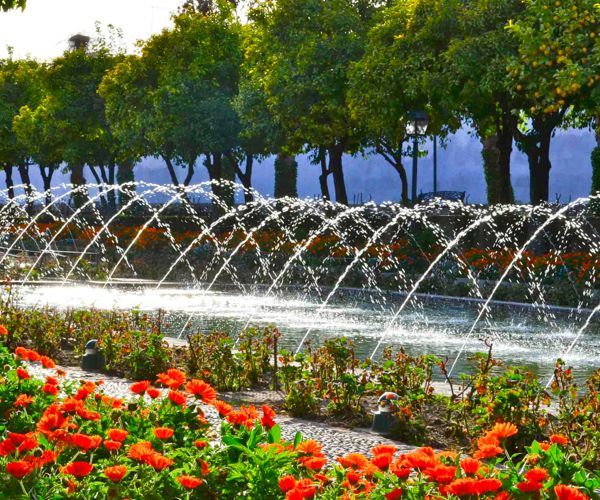 For a more modern and internationally inspired garden, visit La Concepcion botanical garden in Malaga. What began more than 150 years ago as a private endeavour to amass an unrivalled collection of plants and trees from around the world is now a well organised and magnificent botanical garden spread over 49 hectares on the outskirts of the city and has only been open to the public for some 20 years.
Culinary festivals
One of the most engaging and entertaining ways to celebrate the harvest and the proliferation of beautiful autumn products in Andalusia is to attend one of the many food festivals across the region. The Spanish need little excuse for a party, and the harvest abundance of varied and delicious products is as good an excuse as any. Each of these fiestas will include music and dance, copious amounts of drink and amazing food. This is the best way to get your cultural and culinary fix at the same time.
For a more modern and internationally inspired garden, visit La Concepcion botanical garden in Malaga. What began more than 150 years ago as a private endeavour to amass an unrivalled collection of plants and trees from around the world is now a well organised and magnificent botanical garden spread over 49 hectares on the outskirts of the city and has only been open to the public for some 20 years.
Culinary festivals
One of the most engaging and entertaining ways to celebrate the harvest and the proliferation of beautiful autumn products in Andalusia is to attend one of the many food festivals across the region. The Spanish need little excuse for a party, and the harvest abundance of varied and delicious products is as good an excuse as any. Each of these fiestas will include music and dance, copious amounts of drink and amazing food. This is the best way to get your cultural and culinary fix at the same time.
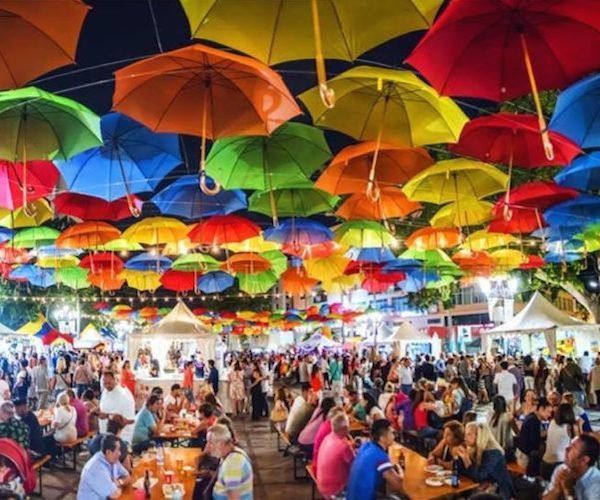 While the harvest festivals begin already in late summer, here is a small sampling of the true autumnal festivals.
Anchovy festival: Rincon de la Victoria, 19-23 September
Almond festival: Almogia, September 30
Chestnut festival: Alcaucin, Alpujarras de la Sierra, Pujerra, 2-4 October
Quince festival: Priego de Cordoba, 29-30 October
Iberian ham and pork festival: Aracena, Campillos, 4 November
Rabbit festival: Parauta, 10 November
Food markets
A self-guided visit to any of the many sensational food markets around Andalusia is another way to enjoy the harvest first hand, by sampling the freshest and best of the local products carted daily to these thriving markets. Perhaps the most impressive of all is the Atarazanas food market in Malaga. For snacking and sampling the goods on the spot, the upscale Ambrosia Market in Marbella has you covered. Andalusia is one of the biggest, most serious ecological and organic food producing regions in Europe and the markets naturally reflect this. Try the market on Cervantes Street in Malaga the second Saturday of each month, the Cala de Mijas market on the last Sunday of every month, or on the third Sunday of each month in the Arroyo de la Miel in Benelmadena.
While the harvest festivals begin already in late summer, here is a small sampling of the true autumnal festivals.
Anchovy festival: Rincon de la Victoria, 19-23 September
Almond festival: Almogia, September 30
Chestnut festival: Alcaucin, Alpujarras de la Sierra, Pujerra, 2-4 October
Quince festival: Priego de Cordoba, 29-30 October
Iberian ham and pork festival: Aracena, Campillos, 4 November
Rabbit festival: Parauta, 10 November
Food markets
A self-guided visit to any of the many sensational food markets around Andalusia is another way to enjoy the harvest first hand, by sampling the freshest and best of the local products carted daily to these thriving markets. Perhaps the most impressive of all is the Atarazanas food market in Malaga. For snacking and sampling the goods on the spot, the upscale Ambrosia Market in Marbella has you covered. Andalusia is one of the biggest, most serious ecological and organic food producing regions in Europe and the markets naturally reflect this. Try the market on Cervantes Street in Malaga the second Saturday of each month, the Cala de Mijas market on the last Sunday of every month, or on the third Sunday of each month in the Arroyo de la Miel in Benelmadena.
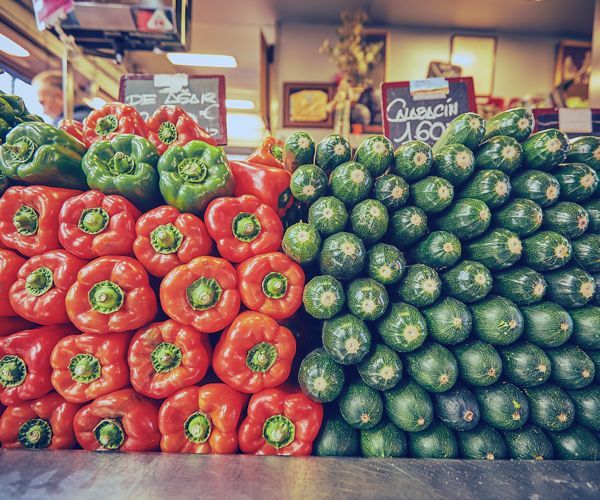 Olive harvest and mill tours
Andalusia is the world’s largest producer of olive oil and recent rankings place nearly 30 Andalusian olive oils in the top 50 of the world. The olive harvest generally lasts anywhere from early November into early winter and a visit to one of the many key farms and mills at this time yields an experience unlike other times of the year. Some will even allow you to join in the harvest with an advance request, but most will show you the process in any case, as they turn ripe olives into liquid gold. There’s an unimaginable variety of different olives with distinctive characteristics and an expert tasting at one of the more important mills will blow your mind.
Olive harvest and mill tours
Andalusia is the world’s largest producer of olive oil and recent rankings place nearly 30 Andalusian olive oils in the top 50 of the world. The olive harvest generally lasts anywhere from early November into early winter and a visit to one of the many key farms and mills at this time yields an experience unlike other times of the year. Some will even allow you to join in the harvest with an advance request, but most will show you the process in any case, as they turn ripe olives into liquid gold. There’s an unimaginable variety of different olives with distinctive characteristics and an expert tasting at one of the more important mills will blow your mind.
 See such olive farms as Mueloliva in Priego de Cordoba, Melgarejo Mill in Jaen, or Finca la Torre in Bobadilla, all of which are ranked as some of the best olive oils in the world.
Alan Hazel is Owner and Director of Cortijo El Carligto. Cortijo el Carligto is a private Andalucían hideaway and luxury rental estate in the hills of Malaga, Spain, overlooking the Mediterranean.
If you would like to be a guest blogger on A Luxury Travel Blog in order to raise your profile, please contact us.
See such olive farms as Mueloliva in Priego de Cordoba, Melgarejo Mill in Jaen, or Finca la Torre in Bobadilla, all of which are ranked as some of the best olive oils in the world.
Alan Hazel is Owner and Director of Cortijo El Carligto. Cortijo el Carligto is a private Andalucían hideaway and luxury rental estate in the hills of Malaga, Spain, overlooking the Mediterranean.
If you would like to be a guest blogger on A Luxury Travel Blog in order to raise your profile, please contact us.Did you enjoy this article?
Receive similar content direct to your inbox.


The Alhambra Palace looks like a must see from your photos! The architecture looks absolutely impressive!
From the many posts I’ve seen recently, seems like the Autumn season in Europe is the best time for foodies. So many food festivals that celebrate the bounty of the land! That and the great weather to enjoy some outdoor sightseeing and architecture.
This looks like my perfect holiday destination. I love exploring museums and historical sites. You learn so much about the culture and traditions by learning more about the country and it’s history. The great thing about staying in a great villa or apartment is having an excuse to go to the local food markets. Your photos are stunning too you seem to have captured so much.
Still time to make it to the last festivals of the season – what more could a foodie want than a Iberian Ham and Pirk Festival?
Sadly Rabbit is far too underrated in the U.K. and many other countries. It is deliciously tender and flavoursome in a slow-cooked Andalusian casserole.
As to the Mezquita the sun is rising later giving visitors the chance to see the sun shining through the windows to create a magical light reflecting from the columns. Amazingly admission is free for the first hour of the day and in many people’s opinion that is the best time to visit.